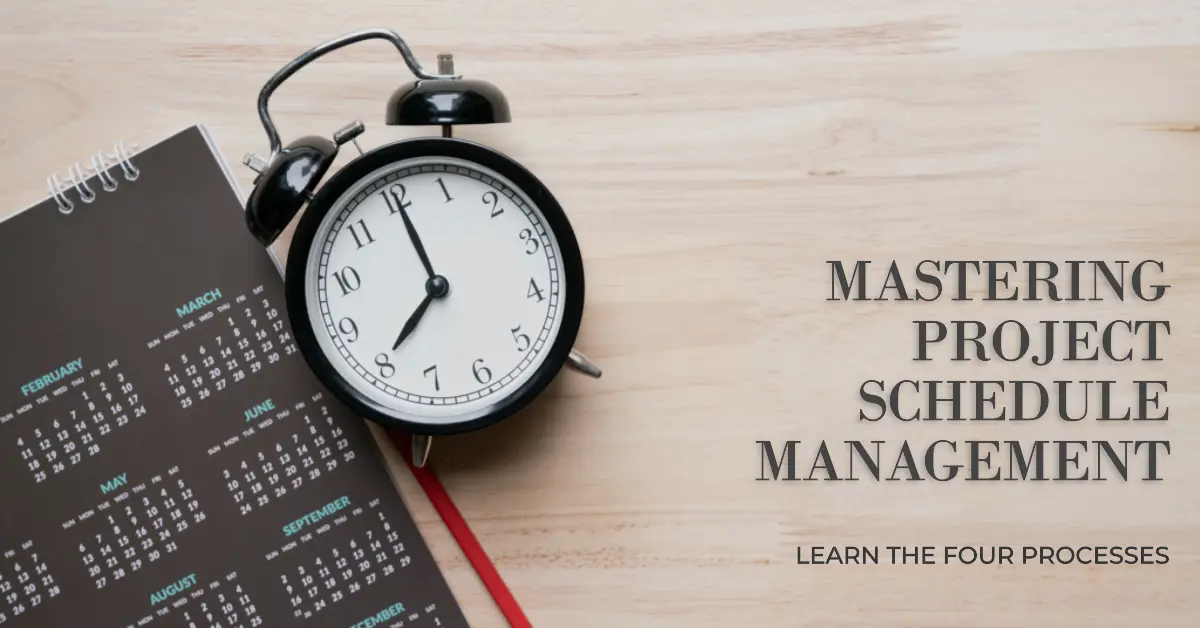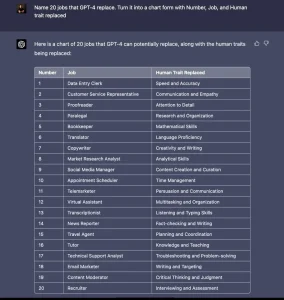I. Introduction
If you’ve ever been responsible for managing a project, you know that keeping everything on track can be quite the challenge. With so many moving parts, it’s crucial to have a solid plan in place to ensure everything runs smoothly and stays on schedule. That’s where project schedule management comes in.
In a nutshell, project schedule management is all about efficiently planning, executing, monitoring, and controlling the various activities and milestones within a project’s timeline. This helps ensure that your project stays on track and is completed on time, within budget, and according to the specified quality standards.
Now, you might be wondering why it’s so important to master these four processes. Well, the answer is simple: when you understand and effectively apply each of these processes, you gain better control over your projects. This enables you to identify potential risks, allocate resources more efficiently, and ensure that your team stays focused and aligned with the project goals.
In this blog post, we’ll dive deep into each of the four processes of project schedule management. We’ll explore their definitions, purposes, best practices, and some valuable tools and techniques that can help you implement them in your projects. So, without further ado, let’s get started on our journey towards project schedule management mastery!
II. Process 1: Plan Schedule Management
As we begin our journey, let’s start with the first of the four processes: Plan Schedule Management. This process lays the foundation for effective schedule management by setting out the roadmap that guides your project from start to finish.
A. Definition and purpose
In essence, planning schedule management involves creating a comprehensive plan that outlines how you’ll manage your project’s schedule. It defines the policies, procedures, and documentation you’ll use to plan, develop, manage, execute, and control the project schedule. By having a clear plan in place, you can ensure that your team stays on track and can quickly adapt to any changes that may arise throughout the project lifecycle.
B. Key components of a schedule management plan
A robust schedule management plan should include the following elements:
- Schedule objectives: Define the goals you want to achieve with your project schedule, such as meeting deadlines or optimizing resource allocation.
- Schedule methodology: Outline the methods you’ll use to create and maintain the schedule, including the tools and techniques you’ll rely on.
- Roles and responsibilities: Assign and clarify the roles and responsibilities related to schedule management within your team.
- Schedule baselines and performance measurement: Establish a baseline schedule to track progress and define how you’ll measure and report schedule performance.
- Change control process: Describe the procedure for handling changes to the project schedule, including how to request, review, and approve changes.
C. Best practices for creating a schedule management plan
When creating your schedule management plan, here are a few best practices to keep in mind:
- Involve your team: Collaborate with your team members to gather their input and buy-in, as they’ll be the ones executing the plan.
- Keep it flexible: Ensure that your plan can adapt to any changes that may arise during the project lifecycle.
- Make it clear and concise: Use clear and straightforward language to make the plan easy for everyone to understand and follow.
- Review and update the plan regularly: Continuously assess your schedule management plan and make any necessary adjustments to keep it aligned with your project’s needs.
D. Tools and techniques for planning schedule management
To help you create an effective schedule management plan, there are various tools and techniques you can utilize:
- Project management software: Use project management tools (e.g., Microsoft Project, Asana, Trello) to create, track, and update your project schedule.
- Schedule templates: Leverage existing schedule management plan templates to guide you in creating your own plan.
- Expert advice: Consult with experienced project managers or industry experts to gain valuable insights and advice on crafting an effective schedule management plan.
So there you have it! By understanding and implementing the Plan Schedule Management process, you’ll be one step closer to mastering project schedule management. In the next section, we’ll delve into the second process, Define Activities, where we’ll break down work packages into manageable activities. Stay tuned!
III. Process 2: Define Activities
Now that we’ve covered the importance of planning schedule management, let’s move on to the second process: Define Activities. In this section, we’ll explore how to break down work packages into smaller, manageable activities that will help you and your team stay organized and on track.
A. Definition and purpose
Defining activities is the process of identifying and documenting all the specific tasks and work elements required to complete each work package within your project. By breaking down your project into smaller, more manageable activities, you can better understand the scope of work, allocate resources effectively, and monitor progress more accurately.
B. Breaking down work packages into activities
To transform your work packages into clearly defined activities, follow these steps:
- Review each work package and identify the individual tasks required to complete it.
- Break down these tasks into smaller, more manageable activities that can be easily assigned and tracked.
- Ensure that each activity is clearly defined, with a specific start and end date, and has a designated owner responsible for its completion.
C. Techniques for defining activities
There are several techniques you can use to help you define activities effectively:
- Decomposition: This involves breaking down work packages into smaller, more manageable components until you reach a level of detail suitable for accurate planning and execution.
- Rolling wave planning: This is an iterative planning technique where you plan activities for the near term in detail, while activities further out in the schedule are planned at a higher level. As the project progresses and more information becomes available, you can refine your plans for the remaining activities.
D. The importance of clarity and specificity in activity definition
As you define your activities, remember that clarity and specificity are crucial. Clearly defined activities help ensure that team members understand their responsibilities and can complete their tasks efficiently. To achieve this, consider including the following information for each activity:
- Activity name: Choose a descriptive name that accurately represents the task.
- Activity description: Provide a brief explanation of what the activity entails.
- Activity owner: Assign a team member responsible for completing the activity.
- Activity duration: Estimate the time required to complete the activity.
By defining your project’s activities clearly and specifically, you’ll create a solid foundation for the next steps in project schedule management. In the next section, we’ll explore the third process, Sequence Activities, where we’ll learn how to establish dependencies and relationships between activities to create a well-organized project schedule. Stay with me, as we continue our exciting journey towards mastering project schedule management!
IV. Process 3: Sequence Activities
Great job sticking with me so far! We’ve covered planning schedule management and defining activities. Now, it’s time to dive into the third process, Sequence Activities. In this section, we’ll explore how to establish the order of activities and understand the relationships between them to create a well-organized project schedule.
A. Definition and purpose
Sequencing activities is the process of determining the optimal order in which your project’s activities should be executed. By identifying dependencies and relationships between activities, you can create a logical and efficient sequence that ensures your project runs smoothly and stays on track.
B. Understanding dependencies and relationships between activities
To effectively sequence activities, it’s crucial to understand the dependencies and relationships between them. Dependencies can be categorized into four types:
- Finish-to-start (FS): An activity must finish before the next one can start.
- Start-to-start (SS): An activity must start before the next one can start.
- Finish-to-finish (FF): An activity must finish before the next one can finish.
- Start-to-finish (SF): An activity must start before the next one can finish.
Identifying these dependencies helps you understand the flow of your project and the potential impact of changes in the schedule.
C. Techniques for sequencing activities
There are several techniques you can use to sequence activities effectively:
- Precedence Diagramming Method (PDM): This graphical technique represents activities as nodes and dependencies as arrows, helping you visualize the sequence and flow of your project.
- Gantt charts: These bar charts illustrate the start and end dates of each activity, making it easy to see their sequence and duration.
D. Tips for optimizing activity sequences
When sequencing your activities, keep these tips in mind to ensure your project runs smoothly:
- Prioritize critical activities: Focus on sequencing activities that have the most significant impact on your project’s success and schedule.
- Be mindful of resource constraints: Consider the availability of resources (e.g., team members, equipment) when determining the sequence of activities.
- Build in buffer time: Incorporate some extra time between activities to account for unexpected delays or changes.
- Continuously review and adjust the sequence: Regularly assess the sequence to ensure it remains aligned with your project’s needs and objectives.
By effectively sequencing your project’s activities, you’ll create a well-organized and efficient schedule that keeps your project on track. Now, let’s move on to the final process in our journey towards project schedule management mastery: Estimate Activity Durations. In the next section, we’ll delve into the importance of accurate duration estimates and explore some helpful techniques to get the job done. Let’s go!
V. Process 4: Estimate Activity Durations
We’ve made it to the final process in our journey towards project schedule management mastery: Estimate Activity Durations. In this section, we’ll discuss the importance of accurate duration estimates and explore some helpful techniques to make sure your project stays on schedule.
A. Definition and purpose
Estimating activity durations involves determining the amount of time required to complete each activity in your project. Accurate duration estimates are crucial for creating a realistic project schedule, allocating resources effectively, and ensuring that your project stays on track.
B. Factors affecting activity duration estimates
When estimating activity durations, consider the following factors that can impact the time required to complete an activity:
- Scope and complexity: The size and complexity of an activity can significantly affect its duration.
- Resource availability: The number of resources (e.g., team members, equipment) assigned to an activity and their availability can influence the time needed for completion.
- Skill and experience: The skill level and experience of the resources assigned to an activity can impact the efficiency and speed at which the task is completed.
- External factors: Consider any external factors (e.g., weather, regulations, market conditions) that may impact the duration of an activity.
C. Techniques for estimating activity durations
There are several techniques you can use to estimate activity durations effectively:
- Expert judgment: Consult with experienced team members, stakeholders, or subject matter experts to gather their insights and opinions on the time required to complete an activity.
- Analogous estimating: Use historical data from similar past projects to estimate the duration of an activity in your current project.
- Parametric estimating: Apply mathematical formulas, such as productivity rates or cost per unit, to calculate the duration of an activity based on historical data and project parameters.
D. The importance of incorporating contingency reserves
When estimating activity durations, it’s essential to incorporate contingency reserves to account for any uncertainties or risks that may arise during the project. This buffer time allows for flexibility in your schedule, helping to ensure that unexpected delays or changes don’t derail your project’s progress.
By accurately estimating activity durations and incorporating contingency reserves, you’ll create a realistic and reliable project schedule that sets your project up for success.
And there you have it! We’ve covered all four processes of project schedule management: Plan Schedule Management, Define Activities, Sequence Activities, and Estimate Activity Durations. By mastering these processes, you’ll be well on your way to delivering successful projects on time and within budget. In the next section, we’ll discuss how to implement these processes in your projects and continuously improve your schedule management approach. Keep up the great work, and let’s bring it home!
VI. Implementing the Four Processes in Your Projects
Congratulations on making it this far! You’ve learned about the four essential processes of project schedule management, and now it’s time to put that knowledge into action. In this section, we’ll discuss how to integrate these processes into your project management framework, tailor them to fit your specific project needs, and continuously refine your approach for even better results.
A. Integrating the processes into your project management framework
To make the most of these processes, it’s crucial to integrate them into your overall project management framework. Here are some steps to help you get started:
- Create a schedule management plan early in your project, ensuring that all team members and stakeholders understand the plan’s objectives and their roles and responsibilities.
- Develop a detailed work breakdown structure (WBS) to break down your project into manageable work packages, and then define the activities required to complete each package.
- Identify dependencies and relationships between activities, and sequence them to create a logical and efficient project schedule.
- Estimate activity durations and incorporate contingency reserves, taking into account factors such as scope, complexity, and resource availability.
B. Tailoring the processes to fit your specific project needs
While the processes we’ve discussed are broadly applicable, it’s essential to tailor them to your specific project’s needs and constraints. Consider factors such as your project’s size, complexity, industry, and organizational culture when adapting these processes to your unique situation. Keep in mind that there’s no one-size-fits-all approach – the key is to find what works best for you and your project.
C. Continuously improving and refining your schedule management approach
Project schedule management is an ongoing process that requires constant refinement and improvement. Regularly review and assess your schedule management plan, activities, sequence, and duration estimates, and make any necessary adjustments to keep your project on track. Learn from your experiences and use those insights to enhance your approach for future projects.
And that wraps up our journey through the four processes of project schedule management! By implementing and mastering these processes, you’ll be better equipped to deliver successful projects on time, within budget, and to the satisfaction of your stakeholders. Keep up the fantastic work, and here’s to your continued success in project management!
VII. Conclusion and Next Steps
Wow, what a journey we’ve been on together! We’ve explored the essential components of project schedule management, delved into the four critical processes, and learned how to apply them effectively in our projects. As we conclude our time together, let’s take a moment to recap what we’ve learned and discuss some next steps to help you continue your path towards project schedule management mastery.
A. Key takeaways
Throughout our exploration, we’ve covered:
- The importance of project schedule management and its role in delivering successful projects.
- The four critical processes of project schedule management: a. Plan Schedule Management b. Define Activities c. Sequence Activities d. Estimate Activity Durations
- Techniques and best practices for implementing and continuously refining these processes in your projects.
B. Next steps to continue your journey
Now that you have a strong foundation in project schedule management, here are some next steps to help you continue your growth and development:
- Apply your newfound knowledge: Put these processes into action in your current and future projects, tailoring them to fit your unique needs and constraints.
- Seek out further education: Consider pursuing professional development opportunities, such as project management certifications (e.g., PMP, PRINCE2) or attending workshops and conferences to deepen your understanding and stay up-to-date on industry trends.
- Network and learn from others: Connect with fellow project managers and professionals to share experiences, insights, and best practices.
- Stay curious and keep learning: Embrace a growth mindset and continuously seek ways to improve your project schedule management skills.
As we part ways, I want to express my sincerest gratitude for joining me on this journey. Remember, the path to mastery is one of continuous growth and learning, so stay curious, stay hungry, and always strive for excellence.
Here’s to your success in project schedule management and beyond!
To find out how Artificial Intelligence is changing the Project Management landscape, you have enjoy reading this article https://www.shaunstoltz.com/did-artificial-intelligence-just-change-everything-about-project-management/
Find out more about Shaun Stoltz https://www.shaunstoltz.com/about/
This post was written by an AI and reviewed/edited by a human.



